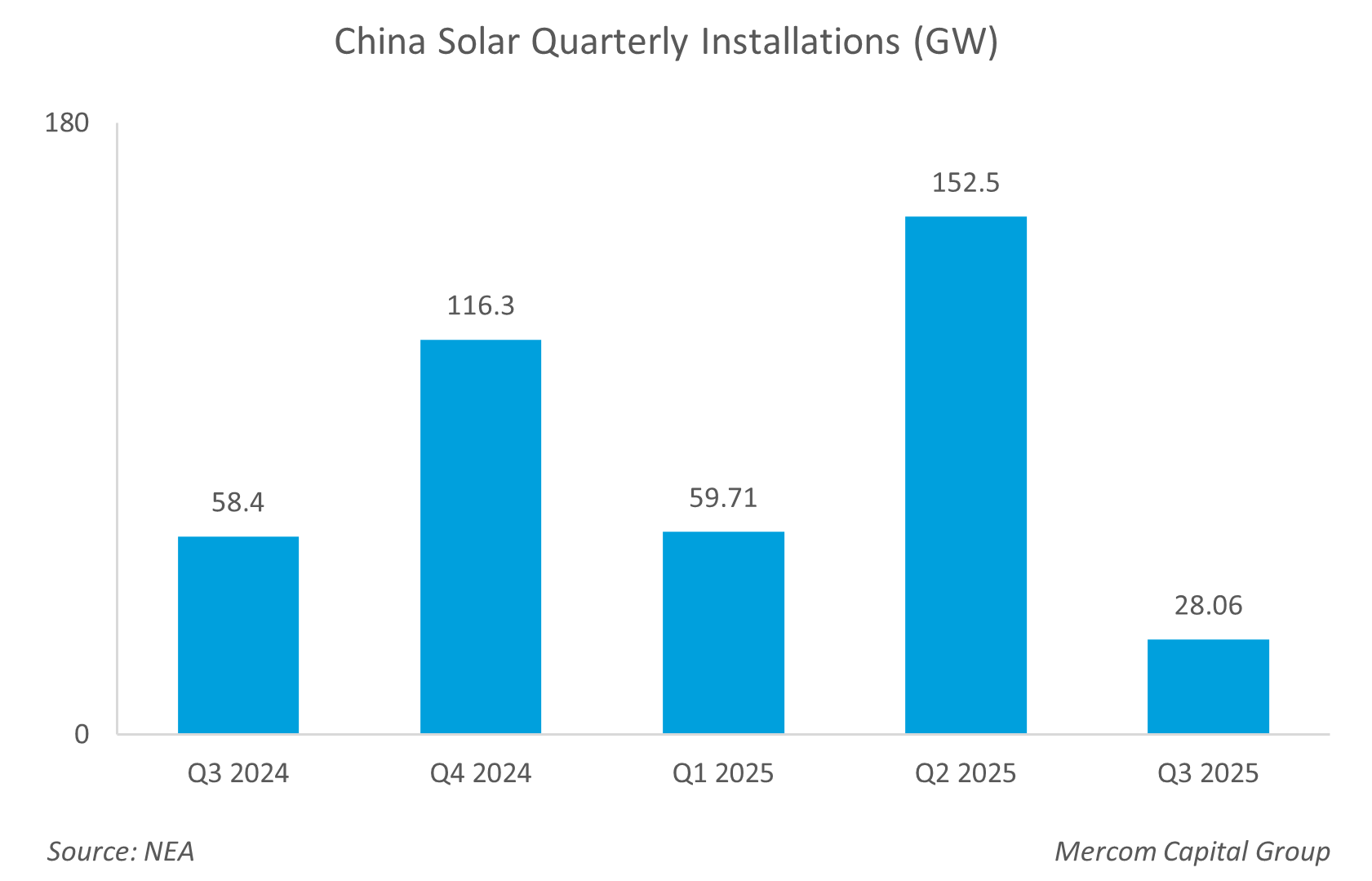China Adds 28 GW of Solar Capacity in Q3 2025, Down 52% YoY
Solar installations for the first nine months of 2025 stood at 240.27 GW
October 27, 2025
Follow Mercom India on WhatsApp for exclusive updates on clean energy news and insights
China added 28.06 GW of solar power capacity in the third quarter (Q3) of 2025, a 52% year-over-year (YoY) decrease from 58.4 GW, according to the National Energy Administration.
The China Photovoltaic Industry Association had noted that solar installations will likely decline in 2025 with the introduction of market-based pricing reforms. China had relied on a feed-in tariff regime to ramp up renewable energy capacity at a staggering pace.
The National Energy Administration and National Development and Reform Commission announced a sustainable pricing mechanism for renewable energy projects selling power to the grid through market-based bidding in each region from June this year.
Its solar installations for the first nine months (9M) of 2025 totaled 240.27 GW, a 50% YoY increase from 160.88 GW.
China added 61.1 GW of wind and 56.7 GW of thermal capacity in 9M 2025. The country also added 7.2 GW of hydropower capacity and 1.5 GW of nuclear capacity.
As of the end of September, the total installed power generation capacity reached 3,717 GW.
China added 152.5 GW of solar power capacity in the second quarter of 2025, a 168.8% YoY growth from 56.74 GW. Its solar installations for the first half of 2025 totaled 212.21 GW, a 107% YoY increase from 102.48 GW in the same period last year.
China recently unveiled its updated Nationally Determined Contributions for 2035, setting an ambitious target to expand installed wind and solar power capacity to 3.6 TW, more than six times its 2020 goal.
The new plan also seeks to make new energy vehicles mainstream in new car sales, reduce greenhouse gas emissions by 7–10% from peak levels, and raise the share of non-fossil fuels in total energy consumption to over 30%.
Additionally, China will expand its national carbon trading market to include more high-emission sectors.
Announcing the targets at the United Nations Climate Summit in New York, President Xi Jinping emphasized that the global green transition should promote equitable development between the Global North and South. He reiterated that developed nations must lead in emission reductions and provide financial and technological support to developing countries.
According to the “Special Action Plan for Large-Scale Construction of New Energy Storage (2025–2027) released by China’s National Development and Reform Commission, the nation has also set a target to install over 180 GW of energy storage capacity by 2027, up from 95 GW as of June this year.

